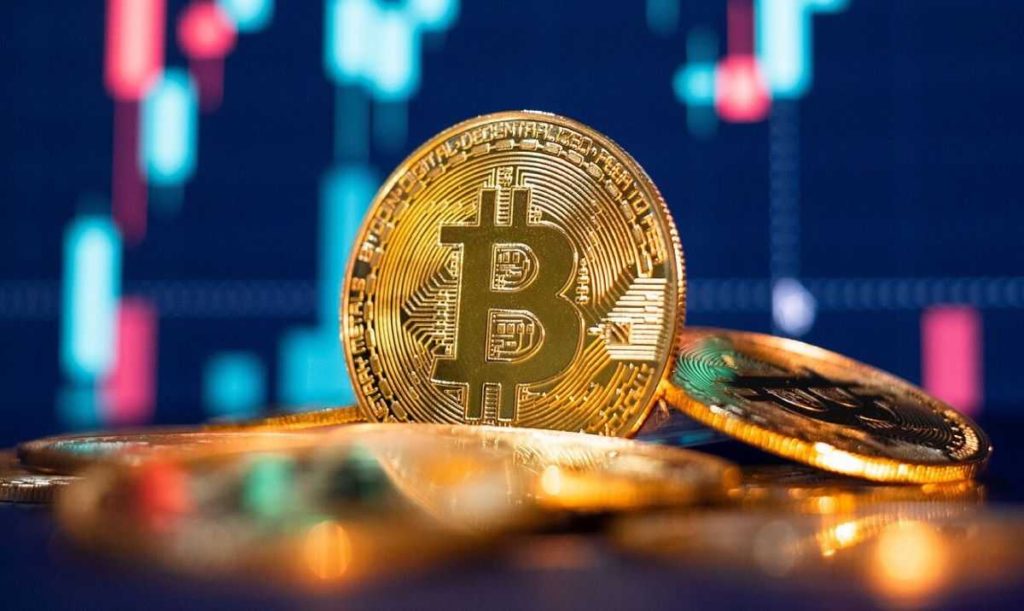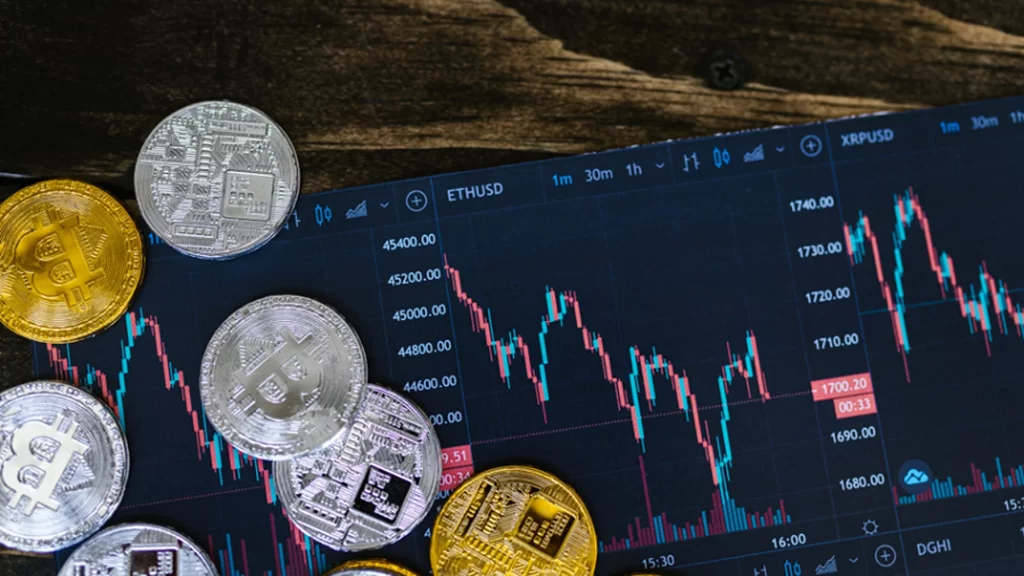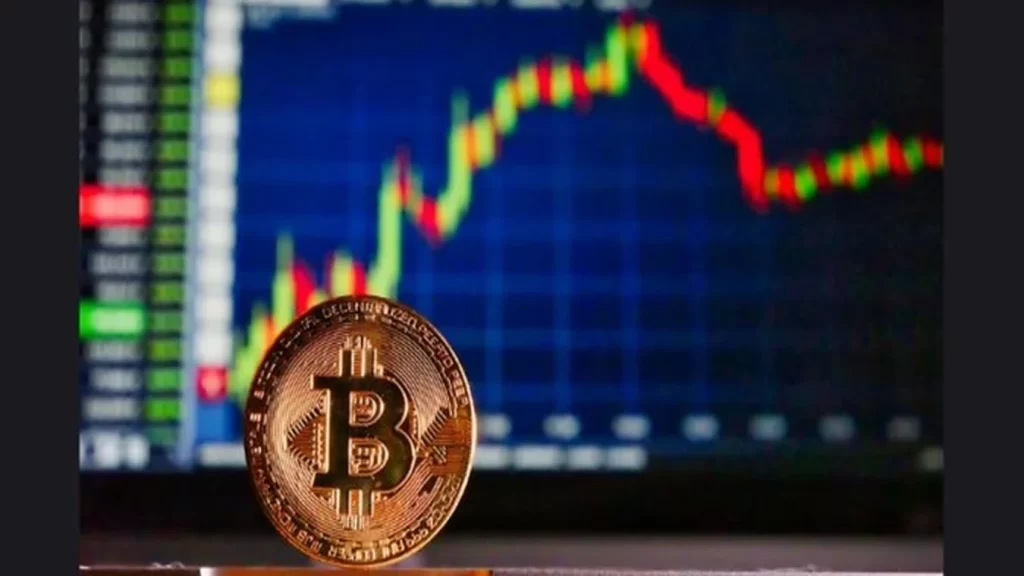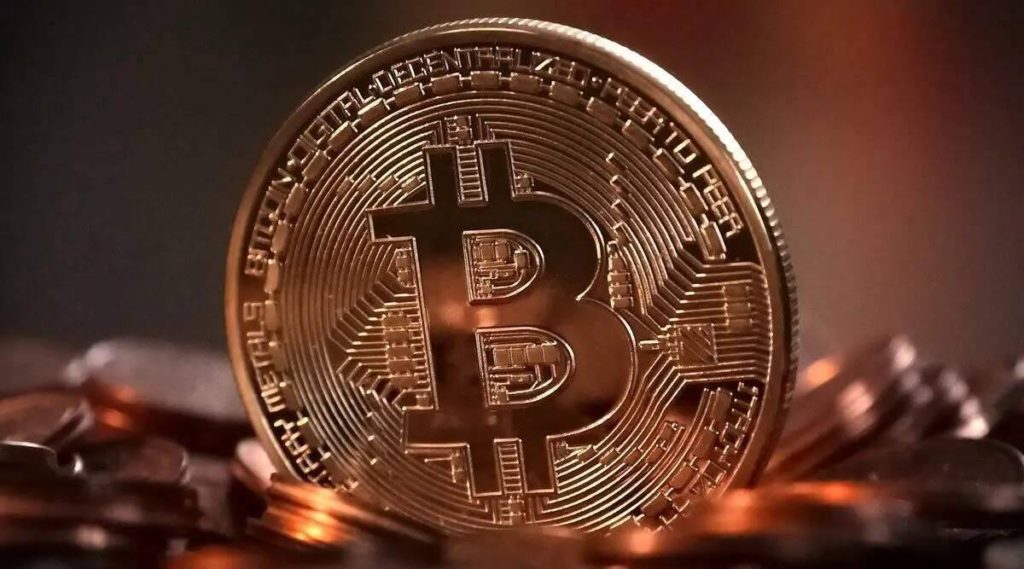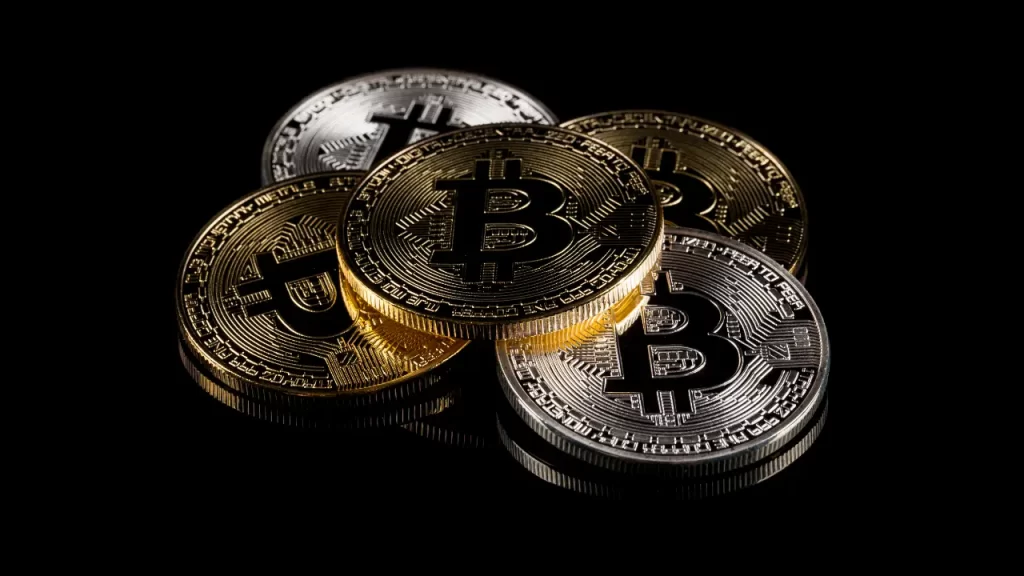The Bitcoin market may face a downturn following the anticipated halving event, fueled by a decrease in inflows to spot Bitcoin exchange-traded funds (ETFs) and a high volume of unrealized gains among traders, which could heighten bearish tendencies on Bitcoin’s value.
Julio Moreno, CryptoQuant’s head of research, highlighted that the selling pressure on Bitcoin is intensifying due to the profits not yet realized from its recent upsurge.
He warned that a forthcoming decline in spot Bitcoin ETF contributions could exacerbate this situation, adversely affecting Bitcoin prices.
Supporting Moreno’s viewpoint is the CryptoQuant’s net unrealized profit and loss (NUPL) indicator. A NUPL value of 0.7 is seen as a red flag, suggesting investors might be poised to cash in, potentially driving prices lower and amplifying sell-off activities.
On March 17, the NUPL indicator stood at 0.606, a slight increase despite recent price adjustments in the market.
Moreno elaborates on potential factors depressing prices, notably the deceleration in Bitcoin ETF acquisitions and entering the halving phase amid substantial unrealized gains by traders, prompting them to secure profits.
On the flip side, the recent performance of Bitcoin ETFs on March 14 marked a significant dip, recording one of its lowest net inflow days with only $132 million, showcasing an 80% reduction compared to preceding sessions.
Despite these bearish signals, the aftermath of the halving might not mirror the severity of past downturns.
James Butterfill from CoinShares posits that institutional investors’ strategy of portfolio rebalancing could mitigate volatility.
READ MORE: Momentum Shifts in Bitcoin Market as Institutional Outflows Slow and Optimism Grows for Future Highs
He notes a decrease in volatility from the last bull market in 2021 and a rise in prices surpassing previous peaks, attributing this to the stabilizing influence of portfolio adjustments.
The appeal of Bitcoin ETFs remains robust, with total net inflows crossing the $12 billion threshold on March 15.
The industry expects further growth as brokerage firms hasten their evaluation processes for offering Bitcoin ETFs to their clientele.
Additionally, investments through Bitcoin ETFs are softening the negative price impacts of miner sales preceding the halving, an event that slashes the reward for mining new Bitcoin blocks by half.
This year, the reward will decrease from 6.25 BTC to 3.125 BTC, although mining costs are projected to stay constant or even increase.
CoinShares anticipates the average post-halving production cost for miners to be around $37,856.
Butterfill comments on the pre-halving trend of miners liquidating part of their Bitcoin reserves for profit maximization, a practice evident in 2024 as well.
CryptoQuant’s data reveals a two-year low in miner reserves, with 1.81 million Bitcoin held as of March 15.
The Bitcoin halving, a deflationary mechanism occurring every four years, is expected around April 19, 2024, potentially altering the dynamics of Bitcoin mining and its market valuation.
To submit a crypto press release (PR), send an email to sales@cryptointelligence.co.uk.
In Argentina, the recent surge in Bitcoin demand reflects the population’s attempts to safeguard their savings amid the peso’s rapid devaluation.
Bloomberg highlighted this trend on March 20, citing a report from Lemon Cash, a cryptocurrency exchange, which recorded an unprecedented interest in Bitcoin.
In the week ending March 10, nearly 35,000 Argentines turned to Bitcoin, marking a twofold increase in the cryptocurrency’s weekly purchase rate compared to the previous year.
The Argentine peso has suffered a significant decline over the past year, with its value against the US dollar plummeting fourfold, from 0.0049 USD in March 2023 to 0.0012 USD.
This depreciation has been a key driver for many Argentines to look for more stable investment alternatives, such as Bitcoin.
Lemon Cash isn’t the only platform experiencing increased demand for cryptocurrencies.
Other major Argentine exchanges like Ripio and Belo have reported similar trends. Belo’s CEO, Manuel Beaudroi, observed a shift in preference from stablecoins to Bitcoin, attributing this change to the cryptocurrency’s recent price rally.
Beaudroi explained, “The user decides to buy Bitcoin when they see the news that the currency is going up, while stablecoin is more pragmatic and many times used for transactional purposes, as a vehicle to make payments abroad.”
Furthermore, he mentioned that Belo has witnessed a tenfold increase in transactions involving Bitcoin and Ether in early 2024 compared to the same timeframe in the previous year.
Despite the burgeoning interest in Bitcoin, there’s still a notable inclination towards stablecoins.
Argentines are reportedly bypassing well-known exchanges to purchase USD stablecoins through “crypto caves,” unregulated markets that offer an escape from stringent currency controls and inflation.
The adoption of digital currency in Argentina is gradually extending beyond investment purposes.
In December 2023, Diana Mondino, minister of foreign affairs, international trade, and worship, announced a decree facilitating the use of Bitcoin and other cryptocurrencies under specific conditions as part of economic reform efforts.
This led to a groundbreaking rental agreement in Rosario, where a tenant agreed to pay their rent in Bitcoin, showcasing the growing practical use of digital currencies in everyday transactions.
To submit a crypto press release (PR), send an email to sales@cryptointelligence.co.uk.
The Uzbekistan National Agency for Prospective Projects (NAPP) announced an increase in monthly fees for cryptocurrency market participants on March 19, 2024.
This move revises an initial directive from the Ministry of Justice back in September 2022, aimed at enhancing the financial contributions from the crypto sector to state revenues.
This decision comes after NAPP’s evaluation of the sector’s profitability, leading to a new fee structure affecting crypto exchanges and retailers alike.
Crypto exchanges in Uzbekistan will now incur a monthly fee of 740 basic reference values (BRV), equivalent to about 251.6 million Uzbekistani som ($20,015), a significant hike from the previous 400 BRV or 136 million som ($10,819).
The BRV, a unit used for calculating various financial obligations like taxes and fines, has thus become a more substantial burden for these businesses.
Similarly, the fees for crypto retailers have risen sharply to 185 BRV per month, translating to 62.9 million som ($5,003), up from a mere 20 BRV or about 6.8 million som ($540) previously.
NAPP’s rationale behind these adjustments is to double the revenue from the crypto sector while ensuring these changes do not adversely affect the service providers’ financial health.
The revised fee system is set to be implemented on June 20, giving stakeholders three months to adjust.
This regulatory adjustment follows a Memorandum of Understanding between NAPP and Tether, focusing on fostering blockchain innovations within Uzbekistan, such as stablecoins and digital asset tokenization.
Although the finer details of this partnership remain confidential, Tether has expressed its commitment to working with local authorities to develop a conducive legal and regulatory environment for crypto assets.
Additionally, this development is in line with NAPP’s legal action against Binance for operating without a proper license and failing to settle fines. Uzbekistan mandates that all crypto exchanges operate with a license and house their trading servers within the country.
This policy, enforcing licensed operation of crypto services, was established in 2023, with the first batch of licenses awarded in November 2022.
Prior to this, Uzbekistan had already restricted access to major international crypto exchanges like Binance, FTX, and Huobi over unlicensed activities accusations.
To submit a crypto press release (PR), send an email to sales@cryptointelligence.co.uk.
Over the last month, Boyaa Interactive, a Hong Kong-based online gaming company, has seen its shares skyrocket by 318% following its decision to diversify investments into cryptocurrencies.
The company announced a $100 million initiative to invest in Bitcoin (BTC), Ether (ETH), and stablecoins such as Tether (USDT) and USD Coin (USDC), allocating $45 million to BTC, $45 million to ETH, and $10 million to stablecoins.
As part of this strategic move, Boyaa Interactive disclosed the purchase of 1,110 Bitcoin at an average price of $41,790 each, 14,855 Ether at approximately $2,777 per unit, and around 8,000,000 units of Tether.
The firm expressed its intention to double down on its crypto investments with an additional $100 million.
This investment comes at a time when Boyaa’s core business, online gaming, continues to perform solidly, generating 100 million yuan ($13.90 million) in revenue and 32.05 million yuan ($4.46 million) in earnings, witnessing growth rates of 6% and 72%, respectively.
The broader context includes a bearish stock market in China, with many firms holding large cash balances and trading below their book values.
The NFT market has shown varying degrees of volatility, illustrated by the floor price of “Nobody,” a collection by legendary director Stephen Chow, which dropped over 70% within a month.
READ MORE: Bitcoin Nears $60K Amid Weekend Sell-Off; Market Eyes ETF Resurgence and Futures Gap for Recovery
Despite promotional efforts, the collection’s trading volume has stagnated after an initial surge.
Similarly, the Bruce Lee Foundation’s NFT collection and Wassie Avatars have experienced dramatic price fluctuations, reflecting the speculative nature of the NFT market despite its recovery from lows in 2020-2021.
Regulatory scrutiny in Hong Kong has increased, with the Securities & Futures Commission (SFC) adding crypto exchange Bybit and its investment products to its investment warning list.
This action underscores the regulatory requirements for operating within the city and the criminal implications of non-compliance.
Concurrently, discussions about a potential spot Bitcoin ETF in Hong Kong hint at a more direct and cost-efficient structure compared to those in the United States, indicating a keen interest in pioneering such financial products in the region.
This period signifies a dynamic phase for Hong Kong’s crypto landscape, marked by significant investments, regulatory developments, and speculative NFT market movements.
To submit a crypto press release (PR), send an email to sales@cryptointelligence.co.uk.
BlackRock‘s spot Bitcoin ETF is on track to surpass Grayscale’s Bitcoin holdings, potentially becoming the largest institutional holder of Bitcoin in the coming weeks.
BlackRock’s ETF, the iShares Bitcoin Trust, currently holds 238,500 Bitcoin, valued at $15.5 billion, with daily inflows averaging $274 million or around 4,120 Bitcoin.
In contrast, Grayscale’s Bitcoin Trust (GBTC) has 350,252 BTC, worth $23 billion, but faces daily outflows of about $277 million, equivalent to 4,140 BTC.
Without significant changes in these trends, BlackRock is expected to overtake Grayscale by April 11, a milestone that could be reached even sooner if BlackRock’s inflows return to the previous week’s average of 7,200 Bitcoin daily.
George Tung, a YouTuber known for his channel CryptosRUs, predicted, “BlackRock is going to flip Grayscale soon,” estimating the shift to occur within the next two weeks.
This development underscores the dynamic landscape of Bitcoin investment, with BlackRock poised to claim the title of the world’s largest institutional Bitcoin holder.
The narrative of this transition is further complicated by the record outflows from GBTC, which experienced its largest single-day loss of $643 million on March 18.
These outflows have raised concerns about potential impacts on Bitcoin’s price, though Senior Bloomberg ETF analyst Eric Balchunas remains optimistic, suggesting the exodus could end within weeks.
He also hinted that the recent surge in outflows might be linked to the financial troubles of crypto firms like Genesis and Digital Currency Group.
Adding to BlackRock’s momentum, its ETF recently surpassed MicroStrategy’s Bitcoin holdings, making it a significant player in the crypto space.
As of now, MicroStrategy holds 214,246 BTC, following a recent acquisition of 9,000 BTC.
This shift not only highlights BlackRock’s expanding influence in the cryptocurrency market but also marks a pivotal moment in the institutional adoption of Bitcoin, reflecting broader trends and challenges within the crypto industry.
To submit a crypto press release (PR), send an email to sales@cryptointelligence.co.uk.
In recent developments, Bitcoin may be witnessing a shift in momentum as institutional outflows diminish.
According to data from the UK-based investment firm Farside, the Grayscale Bitcoin Trust (GBTC) experienced a modest reduction of $170 million on March 22.
This comes amid discussions surrounding the United States Spot Bitcoin exchange-traded funds (ETFs), which have faced challenges, including decreased inflows and record-high outflows from GBTC, signaling a potential consolidation phase before Bitcoin tests its all-time high again.
Notably, the series of GBTC outflows coincided with reports of the bankrupt crypto lender Genesis liquidating its GBTC holdings.
This sell-off could be nearing its end, potentially easing the downward trends observed in ETFs.
Investor Alistair Milne highlighted a significant slowdown in GBTC selling, leading to a decrease in net outflows from Bitcoin ETFs to -$51.6 million. Milne’s observation raises the possibility of a momentum shift in the market.
Supporting this perspective, statistician Willy Woo introduced a new model that correlates ETF inflows with Bitcoin’s price movements, suggesting the most intense selling phase might have concluded.
READ MORE: SEC Delays Decision on Ether ETFs, Casting Doubt on Approval Odds Amidst Growing Skepticism
Woo anticipates continued market choppiness leading up to the Bitcoin halving event, echoing a sentiment for potential consolidation.
Echoing optimism, WhalePanda, a pseudonymous commentator, predicts a sideways market trend, potentially setting the stage for Bitcoin’s ascent to new all-time highs.
The commentator points to a significant demand for Bitcoin inflows to match the coin’s daily emission rate, which is expected to halve soon, further tightening supply.
However, GBTC faces criticism for its diminishing assets under management (AUM), now holding just half of its AUM since its ETF conversion.
Critics argue that GBTC’s reduction is beneficial for the Bitcoin ecosystem, with Vijay Boyapati blaming it for market instability and hindering Bitcoin’s growth.
Despite these challenges, spot Bitcoin ETFs have been historically successful, amassing $12.15 billion in cumulative flows.
Cathie Wood of ARK Invest anticipates more institutional engagement in the near future, signaling continued interest and investment in Bitcoin.
To submit a crypto press release (PR), send an email to sales@cryptointelligence.co.uk.
Bitcoin has recently experienced a significant pullback, dropping over 10% from its all-time high, amidst signs of slowing demand for spot Bitcoin exchange-traded funds (ETFs).
Bloomberg reported on Friday that analysts from JPMorgan Chase and Co. are cautioning that this downward trend could continue.
This sentiment is reflected in the substantial outflows from a group of 10 spot Bitcoin ETFs, marking the largest four-day withdrawal since these products were launched on January 11.
As it stands, Bitcoin is navigating through one of its most challenging weeks this year, with a 4% decrease in value, and is currently trading at approximately $65,400.
JPMorgan strategists, including Nikolaos Panigirtzoglou, are maintaining their stance that Bitcoin remains overbought.
They had previously forecasted in February that the cryptocurrency’s price could face further declines, especially with the approaching halving event in April, which will cut the supply of Bitcoin from mining.
These strategists point to the combination of sustained open interest in CME Bitcoin futures and the dwindling ETF flows as clear bearish indicators.
They noted, “The pace of net inflows into spot Bitcoin ETFs has slowed markedly, with the past week seeing a significant outflow.
“This challenges the notion that the spot Bitcoin ETF flow picture is going to be characterized as a sustained one-way net inflow.”
They anticipate continued profit-taking as the halving event nears, especially given the current overbought market positioning.
Moreover, last month, JPMorgan predicted a potential decline in Bitcoin’s price to around $42,000 post-April, as the excitement around the halving event fades.
Despite reaching a peak of nearly $73,798 on March 14, the enthusiasm among retail traders appears to be diminishing, as highlighted by Naeem Aslam, chief investment officer at Zaye Capital Markets.
He remarked, “The fact that the rally didn’t really take off from the all-time high like before made many question the strength of the rally.”
Conversely, investment firm Bernstein has upgraded its year-end forecast for Bitcoin to $90,000 from $80,000, buoyed by the cryptocurrency’s recent performance and the initial reception to new spot BTC ETFs.
Analysts Gautam Chhugani and Mahika Sapra from Bernstein have expressed optimism, citing the onset of a new BTC bull cycle, robust inflows into ETFs, expansion of miner capacity, and record miner revenues.
These elements collectively bolster the attractiveness of Bitcoin miners as investment avenues for equity investors interested in the cryptocurrency space, even as Bernstein revises its expectations for the April halving event.
To submit a crypto press release (PR), send an email to sales@cryptointelligence.co.uk.
In a landmark case, Jian Wen, a former hospitality worker, has been convicted of money laundering in a UK court specializing in significant fraud cases, following the discovery of a staggering $2.5 billion in Bitcoin under her control.
The Southwark Crown Court’s ruling came after a detailed investigation into Wen’s financial activities, which included the purchase of luxury properties and expensive jewelry.
This investigation examined 48 electronic devices and thousands of files, many in Mandarin, the BBC reported.
Wen’s sudden shift in lifestyle from residing above a Chinese restaurant to renting a lavish six-bedroom house in North London, with a monthly rent of $21,420, signaled the authorities to her trail.
Moreover, her attempt to buy a $30 million mansion in London was a critical lead that prompted further scrutiny by the officials, Cointelegraph noted.
Wen’s ambitious real estate ventures in London, coupled with her inability to pass money-laundering checks despite claiming substantial earnings from Bitcoin mining, raised suspicions.
READ MORE: Bitcoin Futures Volatility Surges: Open Interest Hits $36 Billion Amid Price Fluctuations
The UK police branded the case as the largest Bitcoin seizure in the country, with Wen convicted for her involvement in a money laundering arrangement, awaiting sentencing on May 10.
Chief Crown Prosecutor Andrew Penhale stressed the growing use of cryptocurrencies like Bitcoin in criminal operations, facilitating asset disguise and transfer by fraudsters.
Contrary to the authorities’ stance on cryptocurrencies being widely used for money laundering, a recent US Treasury Department report argued that cash remains the preferred medium for such illicit activities, due to its anonymity and stability.
Adding to the discourse, Nasdaq’s “Global Financial Crime Report” shed light on the financial crime landscape, noting that approximately $3.1 trillion in illicit funds circulated through the global financial system in 2023.
Interestingly, the report did not specifically mention Bitcoin or cryptocurrencies, indicating a broader perspective on financial crime beyond the digital currency realm.
To submit a crypto press release (PR), send an email to sales@cryptointelligence.co.uk.
Bitcoin investors often crave the excitement of market volatility but usually find the reality less thrilling, especially when a surge in prices is swiftly followed by a sharp downturn.
This often results in forced liquidations of futures contracts, exacerbating the fall in Bitcoin’s value.
The Bitcoin futures market, vital for traders wanting to leverage their positions, grows in significance with its expansion, influencing Bitcoin’s price more markedly.
Recently, the aggregate open interest in Bitcoin futures soared to an all-time high of $36 billion on March 21, a significant increase from $30 billion just two weeks earlier.
Leading the charge, the Chicago Mercantile Exchange (CME) recorded $11.9 billion in open interest, overshadowing the inflow to U.S. spot Bitcoin exchange-traded funds (ETFs) since their launch.
Despite the advent of spot ETFs—which some expected would dampen volatility given their $3 billion average daily trading volume—Bitcoin’s volatility has escalated, contrary to these expectations.
Over the last four weeks, Bitcoin’s 30-day volatility index shot past 80%, the highest in over 15 months, starkly contrasting with the lower volatility seen in traditional markets and even in stocks known for their unpredictability.
This heightened volatility was highlighted by a dramatic price correction on March 19, followed by a significant recovery the next day, leading to substantial liquidations in the futures market.
Such volatility not only affects traders but also impacts the general perception of Bitcoin’s risk and its market trajectory.
READ MORE: Bitcoin Rallies Amid Fed’s Interest Rate Decision, Showcasing Resilience Against ETF Outflows
The futures market serves as a double-edged sword, offering opportunities for leveraged positions but also presenting risks of sharp corrections and liquidations.
This dynamic can lead to short-term buying pressure if the market reverses from bearish bets, contributing to the observed volatility.
Some analysts point to excessive leverage or market manipulation as causes, with instances where market movements in related sectors seemingly coincide with major Bitcoin price shifts, though the motivations behind such movements remain speculative.
To understand the impact of futures on Bitcoin’s price, examining the premium on monthly contracts is crucial.
These contracts, favored by professional traders for their lack of a funding rate, command a significant premium over spot prices, reflecting market sentiment.
Despite a recent price dip, the sustained high premium on futures contracts indicates a bullish stance among traders, yet the risk of forced liquidations looms large, especially with the substantial open interest in the market.
To submit a crypto press release (PR), send an email to sales@cryptointelligence.co.uk.
On March 21, Bitcoin maintained its upward trajectory, buoyed by a quick recovery that delivered a 12% increase in its price.
This uptick followed a period of consolidation within a tight range, sparked by a favorable response to comments made by the United States Federal Reserve, which opted to keep interest rates steady.
The Federal Reserve’s decision came after the Federal Open Market Committee (FOMC) meeting, with Chair Jerome Powell indicating potential rate cuts later in the year.
He stated it would be “appropriate” to initiate such cuts once there was greater confidence in inflation moving sustainably towards the 2% target.
A press release underscored this stance, emphasizing patience until there’s more certainty about the inflation trajectory.
This development helped Bitcoin avoid a drop below the $60,000 support level, propelling it to $68,000 and negating its recent losses.
The sentiment was encapsulated by a popular trader, Jelle, on X (formerly Twitter), who highlighted the importance of staying above $65,300 for Bitcoin to potentially revisit its 2021 cycle highs.
READ MORE: Starknet Expands Airdrop Eligibility, Addressing Immutable X and ETH Staker Concerns
This surge inflicted significant losses on short sellers, with CoinGlass reporting $70 million in short BTC liquidations on March 20.
Despite new withdrawals from U.S. spot Bitcoin exchange-traded funds (ETFs), market morale remained strong.
Farside, a UK investment firm, noted that $261 million exited new ETF products on March 20, largely due to $386 million in outflows from the Grayscale Bitcoin Trust (GBTC), even as other ETFs experienced inflows.
Market commentators expressed optimism amidst these developments. Dyme, a well-regarded voice, observed Bitcoin’s resilience against the backdrop of ETF outflows, suggesting the market’s independence from ETF movements.
Similarly, Samson Mow, CEO of crypto adoption firm Jan3, opined that ETF outflows would inevitably reverse, encouraging investors to plan with this future shift in mind.
These perspectives underscore a growing belief in Bitcoin’s enduring appeal and its capacity to withstand market fluctuations.
To submit a crypto press release (PR), send an email to sales@cryptointelligence.co.uk.



